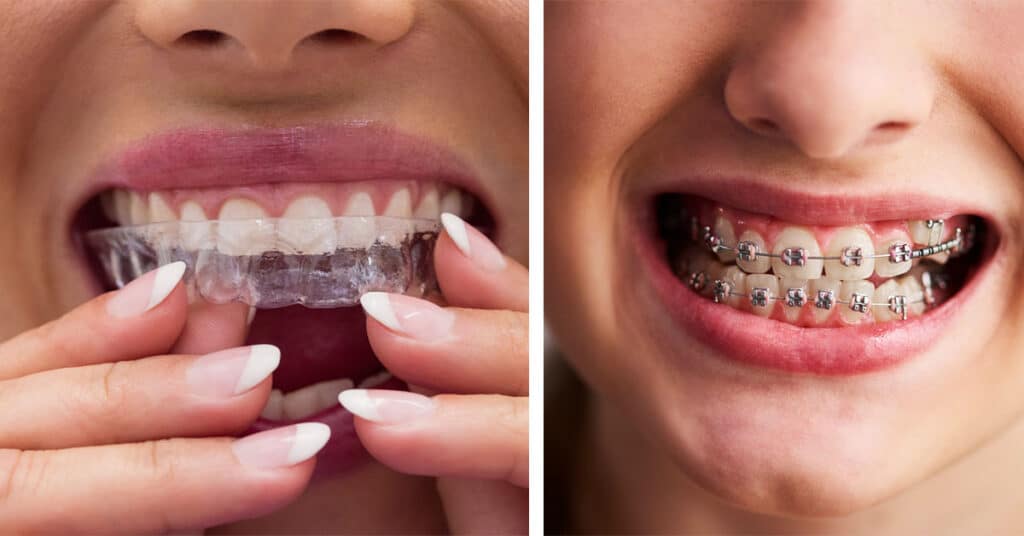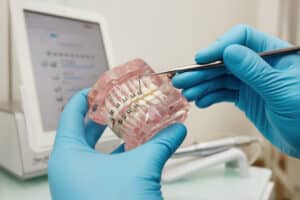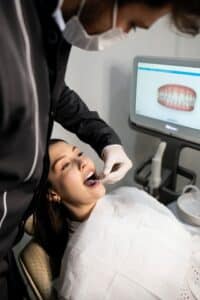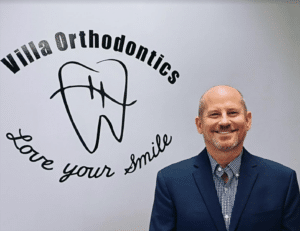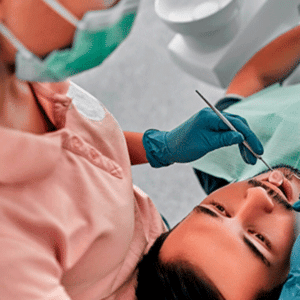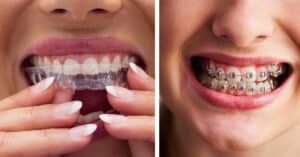When it comes to orthodontic treatment, modern dentistry offers a plethora of choices. At Villa Orthodontics in Glen Allen, VA, we frequently encounter patients who are torn between Invisalign and traditional braces for their teeth alignment needs.
The decision can be a difficult one, and it often depends on several factors, including aesthetics, cost, lifestyle, and the complexity of the dental case. Understanding what each of these orthodontic appliances offers is the key to making the best decision for your smile.
What Are Braces?
Traditional braces have been around for decades and remain a tried-and-true method for straightening teeth and correcting bite issues. Braces consist of brackets that are attached to your teeth, connected by wires and tiny rubber bands. They are available in various materials such as stainless steel, ceramic, and even gold-plated varieties.
PROS:
1. Effective Orthodontic Treatment for Complex Dental Issues
Traditional braces are often the go-to choose for complicated dental problems such as severe crowding, significant overbites or underbites, and issues that require vertical tooth movement. The strong mechanical force exerted by braces is highly effective in correcting a wide range of dental irregularities, making it a versatile option for comprehensive treatment plans.
2. A More Affordable Option Compared to Invisalign
While prices can vary depending on various factors like location and the specifics of each case, traditional braces are generally less expensive than Invisalign. This makes them a more accessible orthodontic treatment choice for many patients, especially those on a budget.
3. Colored Bands for a Unique Look
For those who don’t mind a visible orthodontic treatment or even want to make a fashion statement, braces offer the option to choose colored bands. This customization allows patients, especially younger ones, to express their personal style and may make the experience a bit more enjoyable.
4. Less Compliance Required
Traditional braces are fixed to the teeth, which means they are working 24/7 to correct your alignment. There’s no need to remember to put them on after eating or brushing, eliminating the risk of delayed progress due to non-compliance.
CONS:
1. Highly Visible Orthodontic Treatment
Traditional braces are usually made of metal and are quite noticeable when you smile, speak, or eat. While this might not be an issue for some people, it can be a significant concern for adults and image-conscious teenagers.
2. Challenges in Oral Hygiene
Maintaining a thorough oral hygiene routine can be more complex with braces as one’s orthodontic treatment. The wires and brackets create nooks and crannies where food particles can get trapped, increasing the risk of plaque buildup and tooth decay. Special tools like orthodontic flossers may be needed to navigate the hardware effectively.
3. Initial and Post-Adjustment Discomfort
The mechanical nature of braces — with wires being tightened to move the teeth — can cause discomfort. Patients often report a feeling of pressure or soreness after adjustments, which generally subsides after a couple of days.
4. Food Restrictions
Wearing traditional braces means you’ll need to avoid certain foods that can damage the hardware. This generally includes anything too hard, sticky, or crunchy. Foods like popcorn, hard candy, and certain fruits and vegetables may be off-limits until the treatment is complete.
What Is Invisalign?
Invisalign is an orthodontic treatment option with a more modern approach to teeth alignment. It employs a series of custom-made, clear aligners that are worn over the teeth. Unlike braces, these aligners can be easily removed for eating and cleaning.
PROS:
1. Nearly Invisible
One of the most significant advantages of Invisalign as an orthodontic treatment is its near invisibility. The clear aligners are hardly noticeable, making them an excellent option for those who are self-conscious about the appearance of orthodontic devices. Whether you’re a teen who’s concerned about social photos or an adult attending professional meetings, Invisalign allows you to go about your day without worrying about your smile.
2. Easier Oral Hygiene
Invisalign’s removable nature makes it far easier to maintain good oral hygiene compared to traditional braces. You can simply take off the aligners to brush and floss your teeth, ensuring that you can clean every nook and cranny without the obstacle of wires and brackets.
3. No Food Restrictions
Enjoy popcorn at the movies or bite into a crunchy apple without worry. Since Invisalign aligners are removable, you don’t have to avoid certain types of food that are problematic with traditional braces. This can make mealtimes more enjoyable and less stressful.
4. Better Treatment Planning and Predictability
Invisalign treatment comes with advanced technology that allows you to see a digital simulation of your treatment plan. This gives you a sneak peek of what your smile will look like after the treatment, allowing for more predictable and well-planned outcomes.
CONS:
1. May Be More Expensive Orthodontic Treatment
Invisalign orthodontic treatment often comes at a higher price point compared to traditional braces. While costs can vary depending on your individual needs and geographic location, it’s something to consider if budget is a crucial factor for you.
2. Not Ideal for Extremely Complex Cases
While Invisalign has made significant advancements in treating a variety of dental issues, it may not be suitable for highly complex cases. Extreme malocclusions, rotations, or the need for vertical tooth movements may be better addressed with traditional braces.
3. Requires Discipline
Invisalign aligners must be worn for at least 20–22 hours a day to be effective. You’ll need to have the discipline to keep them in, only removing them for meals and oral hygiene. Non-compliance can result in delayed progress and may extend the duration of your treatment.
Major Comparative Factors
1. Aesthetics
Invisalign is often favored by adults and image-conscious teenagers because the clear aligners are virtually invisible. On the other hand, traditional braces can be quite conspicuous, although tooth-colored ceramic versions are less so.
2. Treatment Time
Both orthodontic treatment options require a commitment of time, often stretching from a few months to a few years. However, the exact duration depends on the complexity of the dental issue.
3. Comfort
Invisalign aligners are generally considered more comfortable because they lack the wires and brackets that can irritate the mouth. However, some people find the pressure exerted by new aligners to be uncomfortable initially.
4. Maintenance
Traditional braces require more intensive oral hygiene routines, including special flossers and brushes. With Invisalign, you can simply remove the aligners for standard brushing and flossing.
5. Cost
In general, Invisalign orthodontic treatment tends to be more expensive than braces, although this varies depending on the specific case and location.
Consult a Trusted Orthodontic Practice in Glen Allen
With 26 years of experience, over 1,000 positive reviews, and more than 10,000 transformed smiles, Villa Orthodontics in Glen Allen, VA, is your premier destination for exceptional orthodontic care. Led by Dr. Richard Villa, one of the first orthodontists in Richmond to be Invisalign-certified, our practice combines cutting-edge technology with personalized care in a friendly environment.
Whether you’re considering Invisalign, traditional braces, or other advanced treatments, we’re dedicated to helping you achieve the smile of your dreams. Don’t wait to take the first step towards a more confident you. Schedule a consultation at Villa Orthodontics today.
